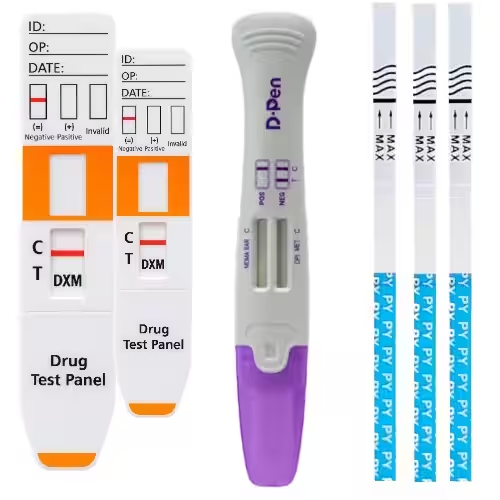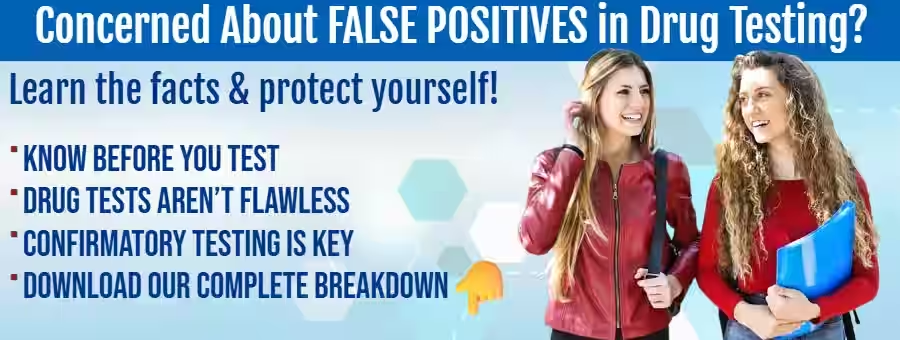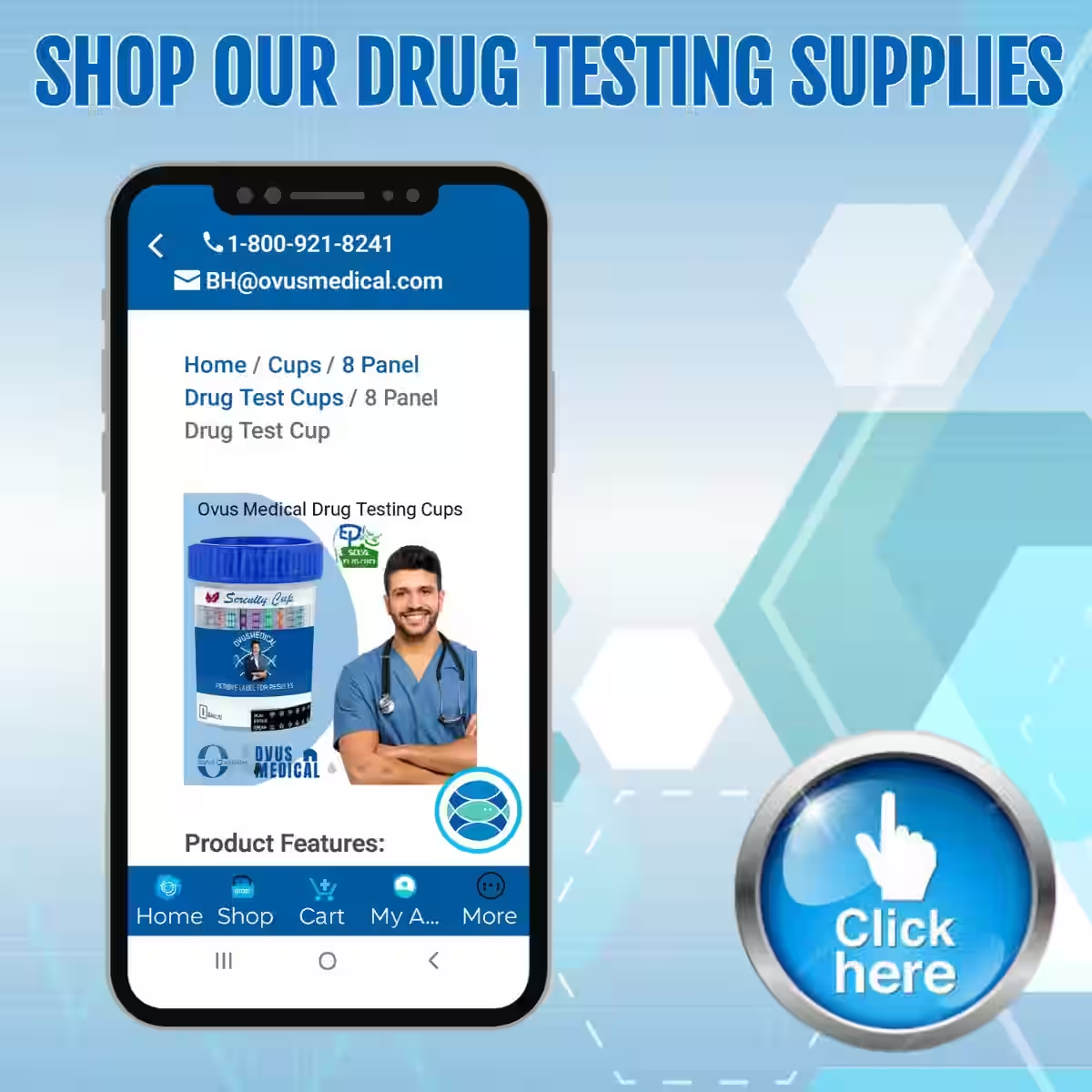False Positives and Negatives on a Drug Test Guide
False positives and negatives on a drug test are important to understand because even the most reliable drug tests are not perfect. Certain foods, medications, and supplements can interfere with accuracy, leading to misleading results. Sometimes a test shows a positive for a drug that was never used (false positive). Other times, a test may completely miss a drug that was actually taken (false negative). This complete guide explains how both situations happen, which substances are most likely to cause them, and why confirmatory testing is critical for accurate results.
⚠️ Drug Test Myths Busted
False positives & negatives happen! Foods, meds & supplements can trigger misleading results. Learn the culprits & how to confirm accuracy.
🚨 Drug Test Alerts
False positives & negatives can cost jobs, licenses, or peace of mind.
Foods, meds & even supplements can trigger wrong results. 👉 See the full list in our free guide.
What Is a False Positive?
A false positive on a drug test occurs when a test shows a positive result for a substance that was not used.
This usually happens when the test reacts to a chemically similar compound, such as an over-the-counter medication, prescription drug, or even a common food.
Examples of false positives on a drug test:
-
Ibuprofen may trigger a positive for THC.
-
Poppy seeds can cause a positive for opiates.
-
Diphenhydramine (Benadryl) may appear as PCP.
-
Certain antidepressants may mimic benzodiazepines.
False positives can create stress, confusion, and even serious consequences for individuals in workplace, legal, or healthcare settings.
That’s why confirmatory testing is always recommended.

What Is a False Negative?
A false negative on a drug test happens when the test fails to detect a drug that was actually used. This can occur for several reasons:
-
The drug was taken in a very small amount below the cutoff level.
-
The sample was diluted, adulterated, or tampered with.
-
The test does not detect newer synthetic or designer drugs (such as K2 Spice, Kratom, or Delta-8 THC).
-
The detection window has passed and the drug has already cleared the body.
False negatives can be just as dangerous as false positives, since they may give the false impression that someone is drug-free when they are not.

False Positives & Negatives
⚠️ A false positive shows a drug you didn’t take (e.g., ibuprofen ➝ THC, poppy seeds ➝ opiates, Benadryl ➝ PCP, some antidepressants ➝ benzos).
❌ A false negative misses a drug that was used. This can happen if the dose was tiny, the sample diluted, or if synthetics (like K2, Kratom, Delta-8) aren’t detected.
👉 Both can cause serious issues—confirmatory testing is always recommended.
Common Causes of False Positives and Negatives on a Drug Test
Every drug test has limits, and different substances can cause different problems. Below are some well-documented examples:
-
THC (Marijuana): False positives may be triggered by ibuprofen, naproxen, or hemp seed oil. False negatives may occur if synthetic cannabinoids are used instead.
-
Opiates: False positives can come from poppy seeds or antibiotics like rifampin. False negatives happen when semi-synthetic opioids such as oxycodone or fentanyl are not included in the test panel.
-
Amphetamines: Cold medications such as pseudoephedrine and some antidepressants can cause false positives. False negatives occur when certain designer analogues are not detected.
-
Alcohol (ETG): Mouthwash, hand sanitizers, or fermented foods can cause false positives, while false negatives may happen if the alcohol use occurred more than 80 hours before the test.
-
Benzodiazepines: Some antidepressants may mimic benzodiazepines, while lorazepam and clonazepam are often missed by standard immunoassays.
-
PCP: Diphenhydramine, dextromethorphan, and tramadol can cause false positives, while low cutoffs can miss true positives.
These are just a few examples. Our full chart provides a detailed breakdown by drug.
Download the Full False Positives and Negatives on a Drug Test Guide
We’ve created a complete reference with every major drug, showing:
-
Which foods, medications, and supplements can cause false positives.
-
The main reasons why false negatives happen.
Frequently Asked Questions (FAQ)
Q: What is a false positive on a drug test?
A false positive occurs when the test shows a positive result for a drug that was not actually used, often due to cross-reactivity with another substance.
Q: What is a false negative on a drug test?
A false negative happens when the test fails to detect a drug that was used, often due to dilution, timing, or test limitations.
Q: Can foods really cause false positives?
Yes. Poppy seeds may cause positives for opiates, hemp products may affect THC, and even mouthwash can sometimes trigger positives for alcohol (ETG).
Q: How do I know if my test result is accurate?
Always confirm unexpected results with laboratory-based testing such as GC-MS or LC-MS for accurate, reliable outcomes.
| Drug | False Positives (Meds/Supplements/Foods) |
False Negatives (Reasons) |
|---|---|---|
| Dextromethorphan (DXM) | Quinine, Diphenhydramine | Rapid metabolism, Low dose below cutoff |
| Alcohol (ETG) | Mouthwash, Hand sanitizers, Fermented foods | Diluted urine, Time lapse >80 hours, Small alcohol intake |
| THC | Ibuprofen, Naproxen, Hemp seed oil | Synthetic cannabinoids instead, Single use detected only for short period, High dilution |
| Adulterations | Unknown | Oxidizing agents, Bleach, Vinegar, Commercial adulterants |
| Amphetamines | Pseudoephedrine, Ranitidine, Bupropion, Adderall (legit) | Short detection window, Rapid metabolism, Designer analogues not detected |
| Barbiturates | Ibuprofen, Naproxen | Short-acting barbiturates missed, Low concentration |
| Benzodiazepines | Sertraline, Oxaprozin | Lorazepam, Clonazepam often missed on immunoassay, Metabolite not detected |
| Buprenorphine | Other opioids | Low dose, Some tests insensitive, Metabolite-only use |
| Clonazepam | Diazepam metabolites | Poor immunoassay sensitivity, Rapid clearance |
| Cocaine | Topical anesthetics with cocaine derivatives | Short detection window (1-2 days), Diluted samples |
| Fentanyl | None commonly reported | Not detected by standard opiate screens, Low-dose patch use |
| Flakka | No common cross-reactives | Novel analogues not detected, Short detection window |
| Gabapentin | No major cross-reactives | Often not included in standard panels |
| Hydrocodone | Other opioids | Cross-reactivity limits, Short detection |
| Heroin | Poppy seeds, Codeine | Metabolizes to morphine—missed if cutoff high |
| K2 Spice (synthetic marijuana) | No common cross-reactives | Most standard THC tests do not detect synthetics |
| Kratom | No common cross-reactives | Not detected on routine panels |
| LSD | Antihistamines, Tricyclic antidepressants | Very short detection window (24h), Low concentration |
| Methadone | Diphenhydramine, Quetiapine | Missed if testing only for opiates, Dilution |
| MDPV (bath salts) | No common cross-reactives | Not detected on routine panels |
| Methamphetamine | Pseudoephedrine, Selegiline, Bupropion | Dilution, Some designer forms missed |
| Nicotine | No major cross-reactives | Short detection window, Low cutoff sensitivity |
| Opiates | Poppy seeds, Quinolone antibiotics, Rifampin | Synthetic/semi-synthetic opioids missed (oxycodone, fentanyl), Dilution |
| Oxycodone | Other opioids | Not picked up on generic opiate screens, Low dose |
| MDMA (ecstasy) | Pseudoephedrine, Bupropion | Adulterated pills may contain no MDMA, Short detection window |
| PCP | Dextromethorphan, Diphenhydramine, Venlafaxine, Tramadol | Short detection, Low cutoff sensitivity |
| PPX (Propoxyphene) | Other opioids | Rarely tested, Short detection window |
| Psilocybin | No common cross-reactives | Metabolizes rapidly, Not included in most panels |
| Ritalin | No common cross-reactives | Not detected by amphetamine tests, Short half-life |
| TCA | Cyclobenzaprine, Carbamazepine | Low dose, Cross-reactivity varies by assay |
| Tianeptine Zaza | No established false positives | Not detected on routine panels |
| Tramadol | Venlafaxine, Dextromethorphan | Often not included in standard opiate screen |
| Zylazine | No established false positives | Rarely included in panels |
| a-PVP | No common cross-reactives | Novel analogues missed |
| DELTA8 | CBD oil, Hemp products | Not reliably detected on THC immunoassays |
EXAMPLES:
| Drug | False Positives | False Negatives |
|---|---|---|
| THC | Ibuprofen, Hemp seed oil | Synthetic cannabinoids, Dilution |
| Opiates | Poppy seeds, Rifampin | Oxycodone, Fentanyl not detected |
| Amphetamines | Cold meds, Antidepressants | Designer analogues missed |
| Benzos | Some antidepressants | Lorazepam, Clonazepam missed |
| PCP | Benadryl, Dextromethorphan | Low cutoff sensitivity |
| Alcohol (ETG) | Mouthwash, Sanitizers | Use >80h ago |





